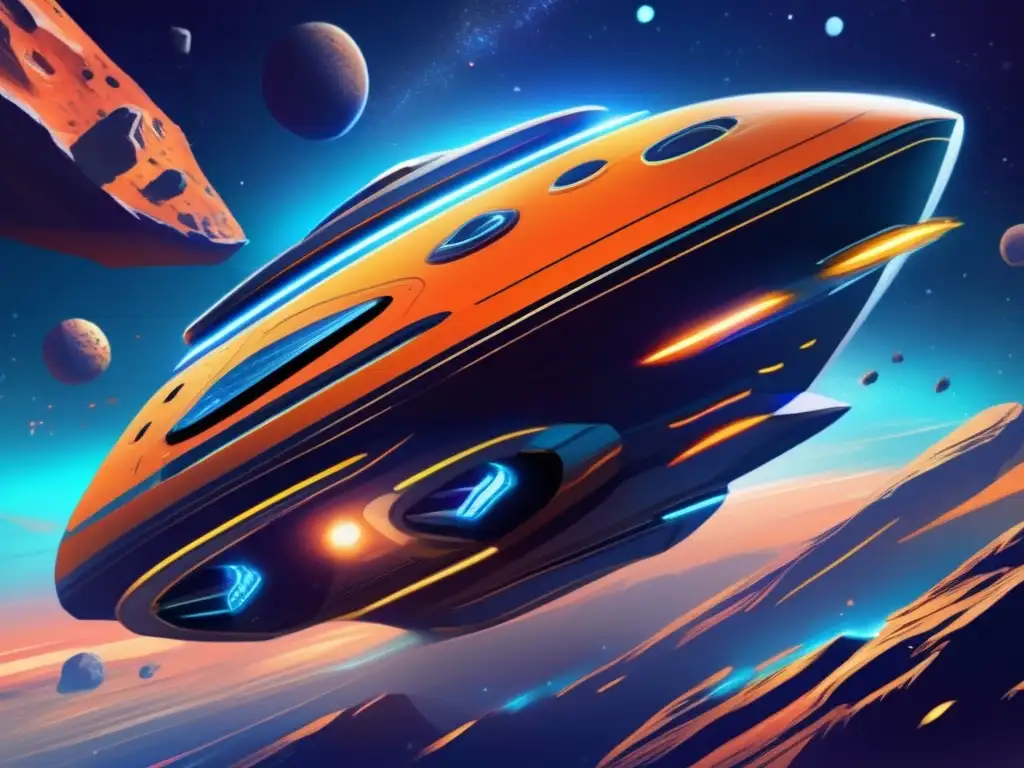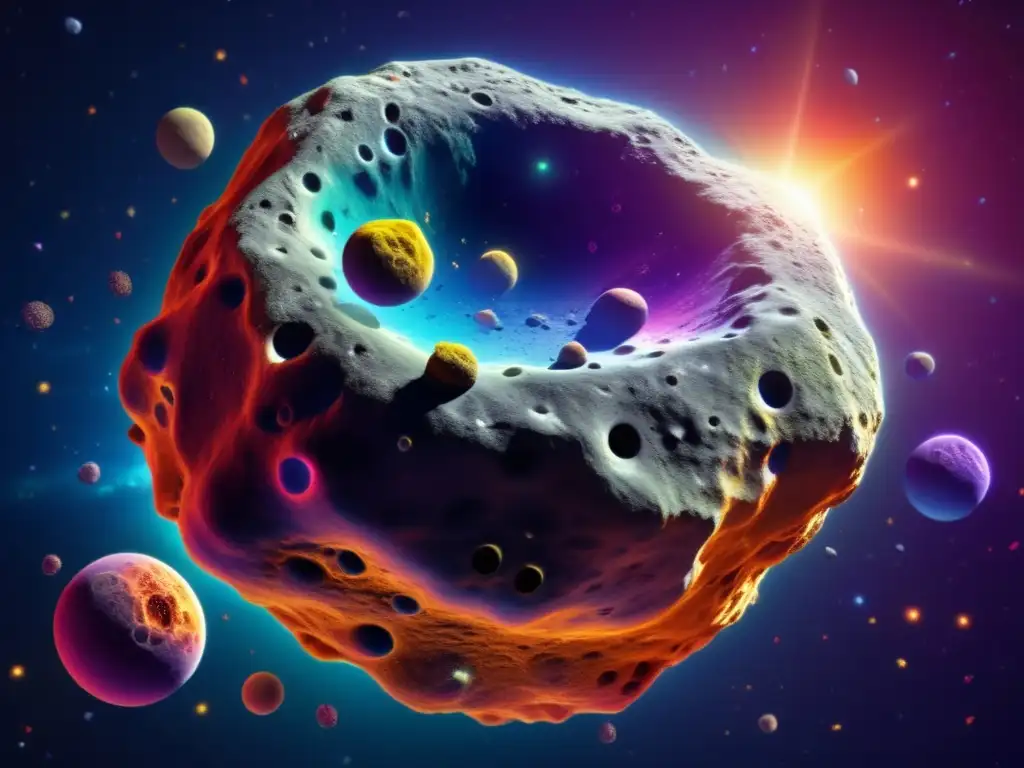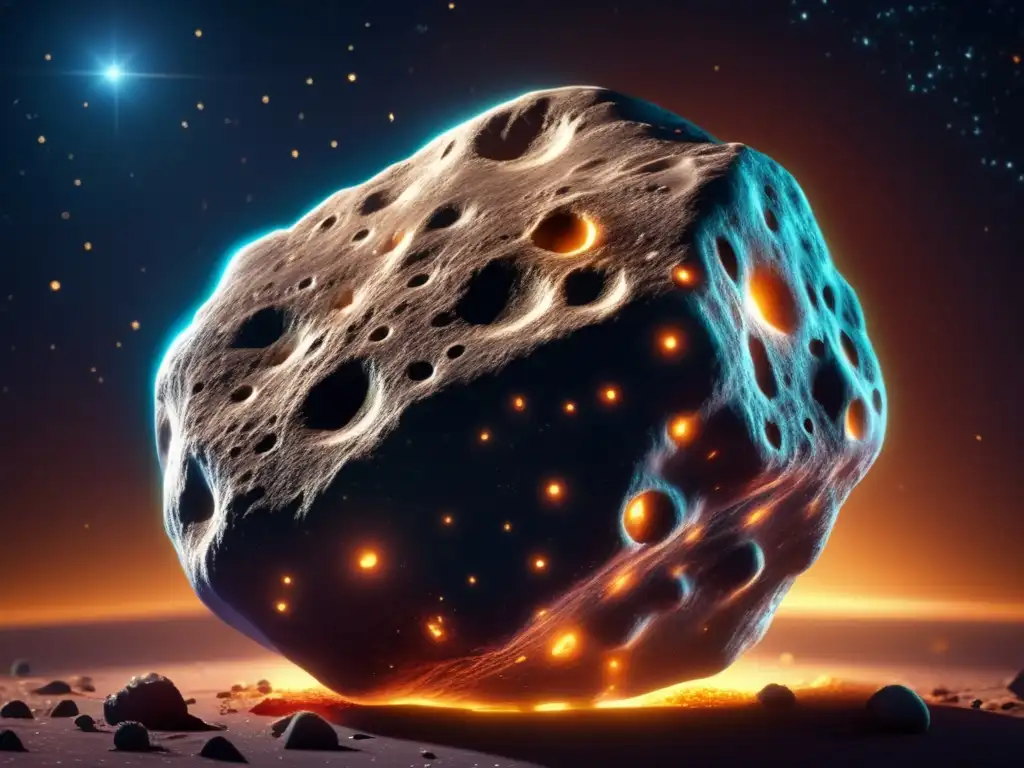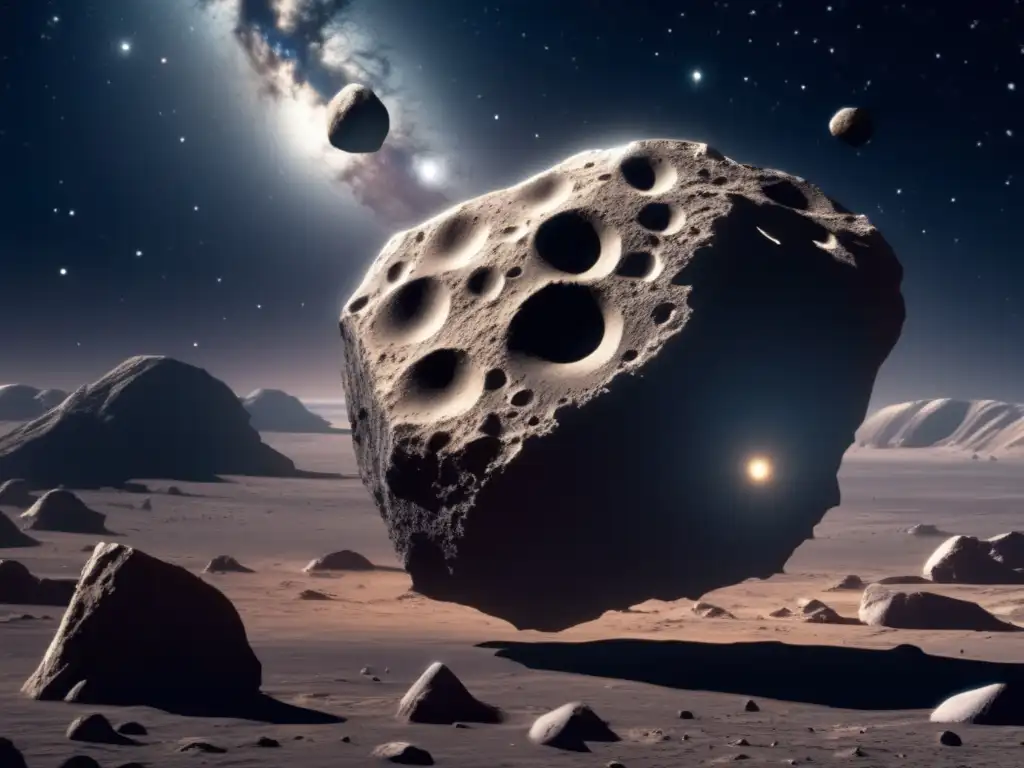Asteroids: The Galactic Ferries Of Microorganisms

Introduction
Asteroids are fascinating cosmic objects that have been grabbing the attention of scientists and astronomers for many years. They are considered to be the left-over debris from the formation of the solar system and have attracted scientific interest due to their potential implications for the origins and history of life on Earth. Recent studies reveal that asteroids may not just be passive observers, but rather could have played a significant role in spreading life throughout the galaxy. In this article, we will explore how asteroids could have acted as ferries of microorganisms, carrying life across the vast expanse of space.
The Origins of Life on Earth

The Panspermia Hypothesis
The panspermia hypothesis suggests that life on Earth may have been seeded by microorganisms brought to Earth by asteroids. According to this hypothesis, life originated elsewhere in the universe and was transported through space by asteroids, comets, or other celestial objects before colliding with our planet. While the idea of panspermia has been around for centuries, it has gained new relevance due to recent discoveries.
Impact Events and the Spread of Life
Studies of impact craters on Earth have shown that asteroids could have delivered organic compounds, such as amino acids, to our planet. These compounds are essential building blocks of life and suggest that asteroids played a crucial role in the emergence of life on Earth. Additionally, some researchers believe that the same impact events that caused mass extinctions on Earth also facilitated the spread of life to other planets, including Mars and even moons like Europa.
Limits of Life in Space
While the transfer of life through space may be possible, it is not a simple process. The extreme conditions of space, such as radiation and low temperatures, are harmful to most living organisms. However, some microorganisms, such as extremophiles, have evolved to survive in these conditions, leading scientists to speculate that they could survive a journey through space.
Asteroids as Ferries

Space Dust and Micro-Organisms
Asteroids are composed of various materials, including rock, dust, and ice. Studies have shown that these objects can also contain microorganisms, either on their surface or within cracks and crevices. These microorganisms could have been transferred from other planets, moons, or comets through impact events or could have originated within the asteroid itself. Additionally, the natural shielding provided by the asteroid's material could protect the microorganisms from the harsh elements of space.
The Role of Gravity and Radiation Pressure
Gravity and radiation pressure play a critical role in moving asteroids through space. While gravity pulls them towards larger celestial bodies, radiation pressure from the sun can push them in different directions. This combination of forces means that asteroids can travel vast distances and interact with numerous objects over time. As a result, asteroids could act as ferries, carrying microorganisms from one planet or moon to another.
Implications for the Search for Life Beyond Earth
Understanding the potential for asteroids to transfer microorganisms between planets and moons has significant implications for the search for life beyond Earth. If we can identify which types of asteroids carry the greatest amounts of organic material, we could focus our search on the regions of space where these asteroids are most likely to travel. Additionally, studying the composition of asteroids could offer insights into the origins of life on other planets as well.
FAQs

-
Could life have originated on an asteroid?
While it is possible that life could have originated on an asteroid, the exact origins of life are still unknown. It is more likely that life originated on a planet or moon and was carried to Earth via asteroid impact events.
-
How can we identify asteroids that carry organic material?
Scientists use various techniques, such as spectroscopy, to study the composition of asteroids. By examining the wavelengths of light reflected by an asteroid, scientists can determine which elements and compounds are present on its surface.
-
What implications does the idea of asteroid-borne microorganisms have for space exploration?
The potential for asteroids to transport life from one planet or moon to another suggests that we may need to take extra precautions when exploring other worlds to avoid contaminating them with microorganisms from Earth. Additionally, studying the composition of asteroids could offer insights into the origins of life on other planets.
-
What are the limitations of the panspermia hypothesis?
The panspermia hypothesis is still a topic of debate in the scientific community, and several questions remain unanswered. For instance, it is unclear whether microorganisms could survive the journey through space or if they could adapt to a new environment once they arrive on a new planet or moon.
-
Could asteroids pose a threat to life on Earth?
While the vast majority of asteroids pose no threat to life on Earth, some larger objects could potentially cause mass extinctions. However, efforts are underway to identify and track these objects to prevent any catastrophic collisions.
Conclusion
Asteroids have long captured the imagination of scientists and the general public alike. While they were once thought to be merely passive objects, recent studies suggest that asteroids may have played a crucial role in the spread of life throughout the universe. As we continue to explore the cosmos, understanding the potential for asteroids to carry microorganisms between planets and moons could prove critical in our search for extraterrestrial life. Let's keep exploring!
Additional Resources

- NASA Astrobiology
- Space.com Asteroid News and Information
- Asteroid Surface Material as a Driver of Microbial Diversity
 Interstellar Pioneers: The Role Of Asteroids In Spreading Life
Interstellar Pioneers: The Role Of Asteroids In Spreading Life Asteroids: The Vessels Of Life In The Universe?
Asteroids: The Vessels Of Life In The Universe? The Bridge Between Planets: How Asteroids Could Carry Life
The Bridge Between Planets: How Asteroids Could Carry LifeIf you want to discover more articles similar to Asteroids: The Galactic Ferries Of Microorganisms, you can visit the Asteroids and Extraterrestrial Life category.
Leave a Reply

Articulos relacionados: